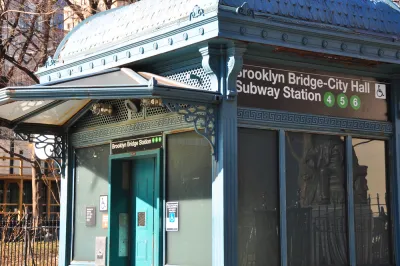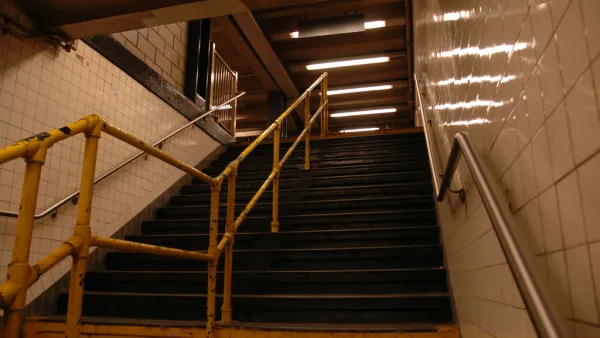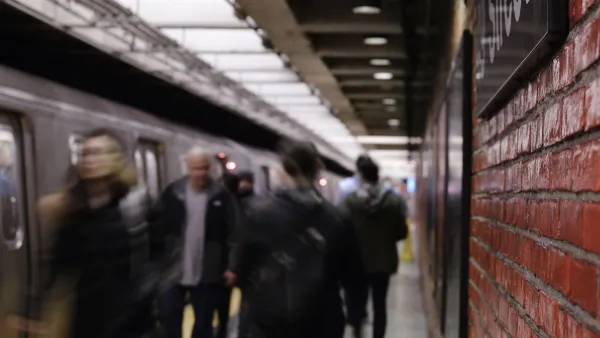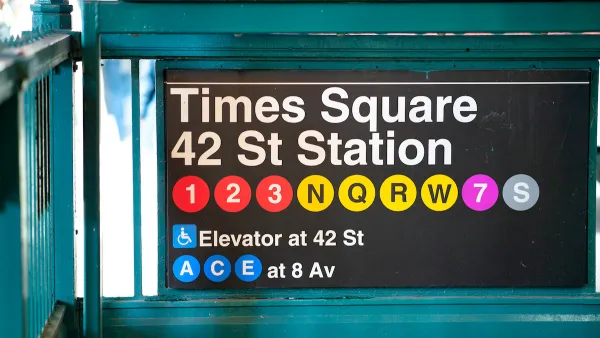After two lawsuits, the New York subway system has announced a 33-year timeline for making 95 percent of its stations fully accessible.

New York City’s subway system will finally become more accessible to people with disabilities or mobility challenges—in 33 years. As Michael Gold reports in The New York Times, “New York has lagged for years behind other major American cities in making its subway system accessible to people with disabilities: Just 126 of its 472 stations, or 27 percent, have elevators or ramps that make them fully accessible.”
As part of a settlement of two lawsuits, the Metropolitan Transportation Authority has committed to adding ramps and elevators to 95 percent of its stations by 2055. “Under the agreement, the transportation authority will make an additional 81 subway and Staten Island Railway stations accessible by 2025. It will make another 85 stations accessible by 2035, 90 more by 2045 and then 90 more by 2055.”
While the New York subway system’s age plays a role in its lack of accessible stations, other cities have done more to retrofit their own older systems. “More than two-thirds of stations in Boston, Philadelphia and Chicago meet the Americans With Disabilities Act’s compliance standards,” Gold notes.
“The changes required by the settlement will benefit a wide band of the populace who struggle to use narrow fare gates or climb subway stairs, including parents toting children in strollers, shoppers carrying large items home and airport travelers with luggage.”
FULL STORY: New York’s Subway System Vows to Be 95 Percent Accessible by 2055

National Parks Layoffs Will Cause Communities to Lose Billions
Thousands of essential park workers were laid off this week, just before the busy spring break season.

Retro-silient?: America’s First “Eco-burb,” The Woodlands Turns 50
A master-planned community north of Houston offers lessons on green infrastructure and resilient design, but falls short of its founder’s lofty affordability and walkability goals.

Delivering for America Plan Will Downgrade Mail Service in at Least 49.5 Percent of Zip Codes
Republican and Democrat lawmakers criticize the plan for its disproportionate negative impact on rural communities.

Test News Post 1
This is a summary

Test News Headline 46
Test for the image on the front page.

Balancing Bombs and Butterflies: How the National Guard Protects a Rare Species
The National Guard at Fort Indiantown Gap uses GIS technology and land management strategies to balance military training with conservation efforts, ensuring the survival of the rare eastern regal fritillary butterfly.
Urban Design for Planners 1: Software Tools
This six-course series explores essential urban design concepts using open source software and equips planners with the tools they need to participate fully in the urban design process.
Planning for Universal Design
Learn the tools for implementing Universal Design in planning regulations.
EMC Planning Group, Inc.
Planetizen
Planetizen
Mpact (formerly Rail~Volution)
Great Falls Development Authority, Inc.
HUDs Office of Policy Development and Research
NYU Wagner Graduate School of Public Service





























